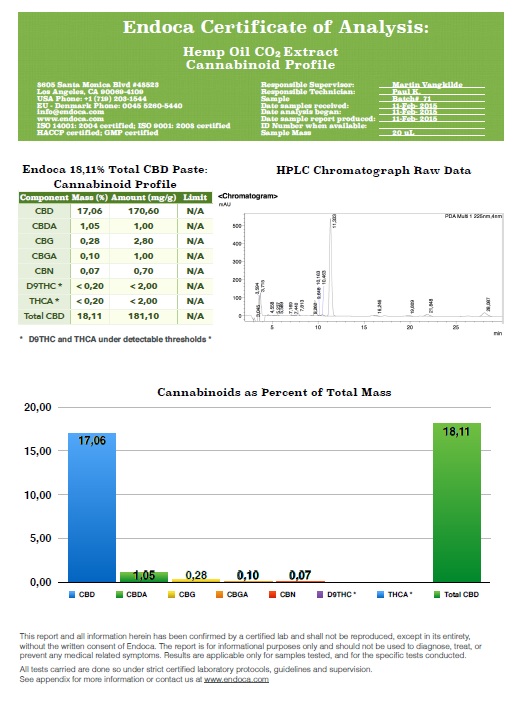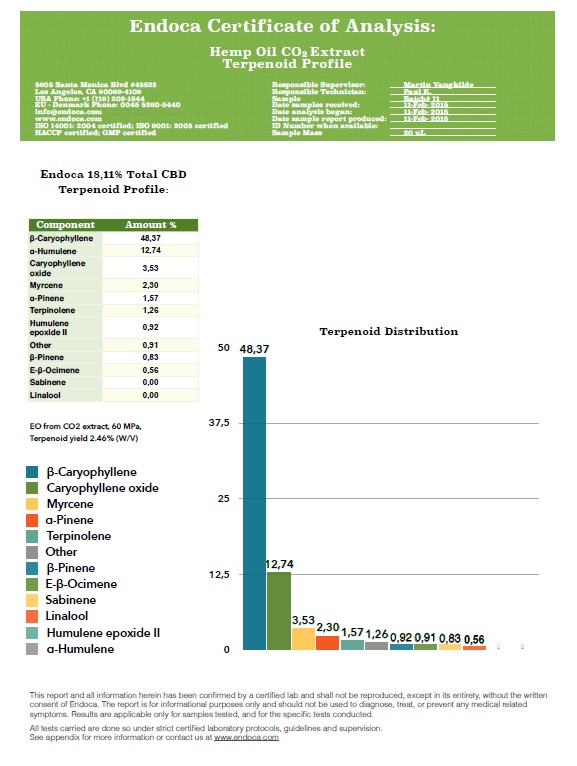Search in blog
Latest posts
The analysis was carried out using the Shimadzu HPLC system equipped with a SIL 30AC thermostated injector, DGU 20A5 vacuum and LC-30AD pump. Chromatographic separation was obtained using the Supelco Discovery HS C18 column (25 x 4.6 mm, 5 μm) RP together with the use of pre column C18 at 30 °C controlled by the CTO-20AC heating furnace. Isocratic elution (acetonitrile: water (0.5% FA) (4: 1)) was used in 30 minutes. The flow rate was 0.8 ml/min. The cannabinoids CBD and CBDA were monitored at wavelengths of 225 and 306 nm using the SPD-M20A diode detector. The concentration of standards was 1 mg/ml with an injection volume of 20 μl. Data evaluation was carried out using Solutions Lab software. Quantitative analysis of the cannabinoids studied was evaluated using a reference curve for each compound. The calibration range was linear for concentrations from 5 to 500 ng /ml, for CBD and from 5 to 500 ng/ml for CBDA. The retention times of the compounds were: CBDA (RT 9.5 min), CBD (RT 11.1 min). Hemp extract was dissolved in 1 ml of methanol. Then the solution was subjected to ultrasound for 5 minutes and stirred for 10 seconds. Samples before HPLC analysis were centrifuged at 4800 revolutions per minute and then diluted with methanol to a final concentration of 1 mg/ml.

10 mg of homogeneous sample was weighed and dissolved in 1 ml of pentane containing 0.04% decane as internal standard. The sample was placed in an ultrasonic water bath for 5 minutes and mixed. 200 μl of the solution thus prepared was diluted with 800 μL of pentane and analysed by the GC-FID method. For terpene analysis, gas chromatography (Agilent HP 6890) with flame-ionization detection (FID) was used. Chromatographic separation was carried out using the capillary column RRTX-5 w/ Integra-Guard. The injection on the chromatographic column was obtained using a split/splitless dispenser in split mode (1:10). The analysis was carried out under the following conditions: temperature program: from 50 °C to 280 °C (growth of 15 °C/min), the column was kept at temp. 280 °C for 15 min, total analysis time 31 minutes; dispenser temperature 280 °C; transfer line temperature 260 °C; helium flow through the chromatographic column 1mL/min. A 2 μL sample was injected onto the column. The data was analyzed using Chemstation v.D.02.00.275 (Agilent Technologies).
